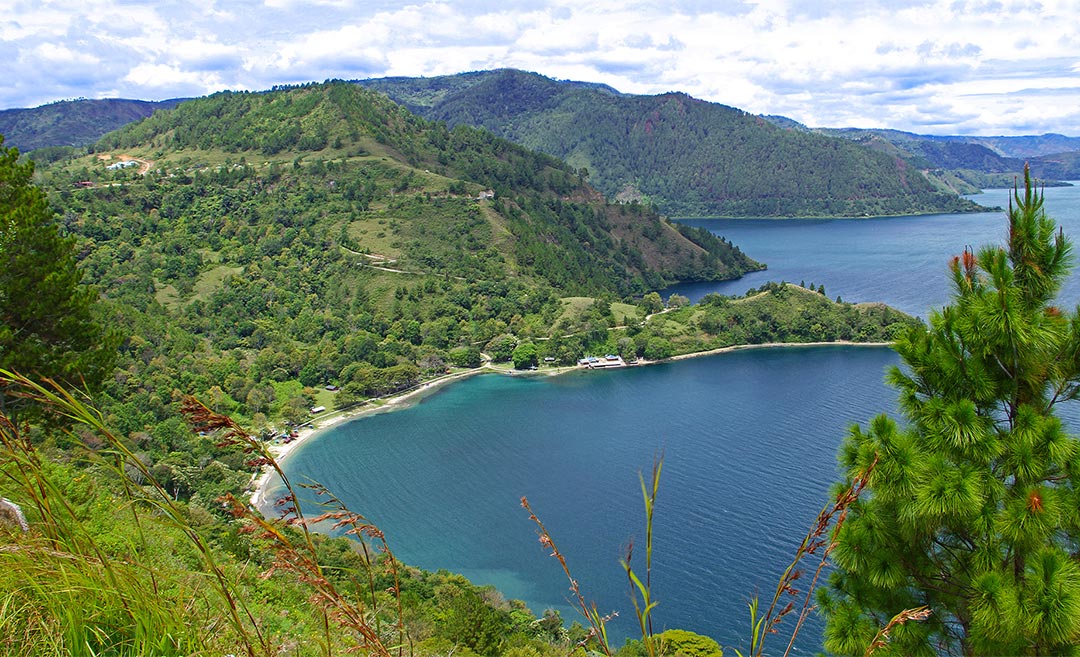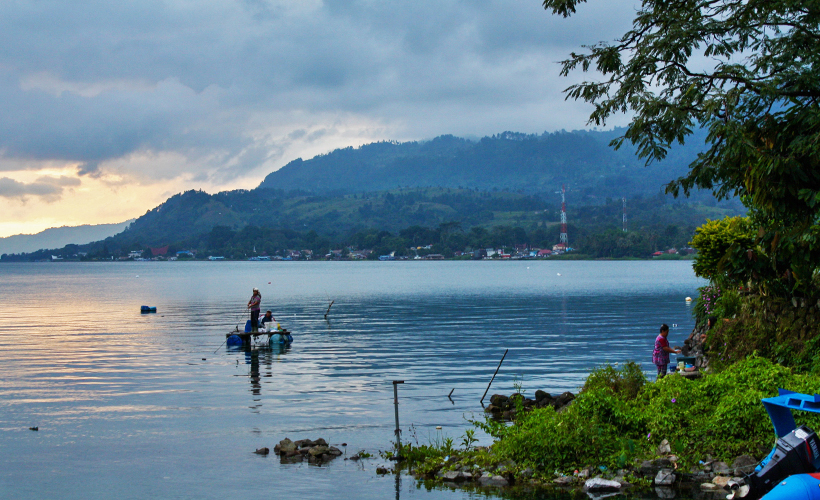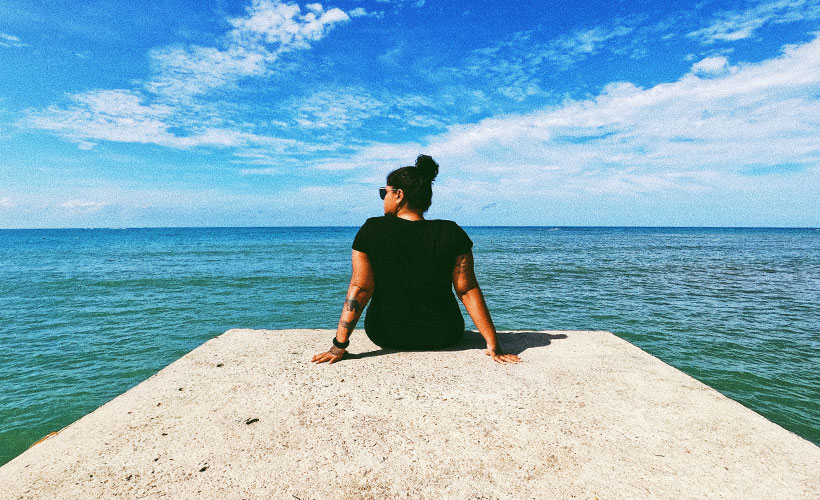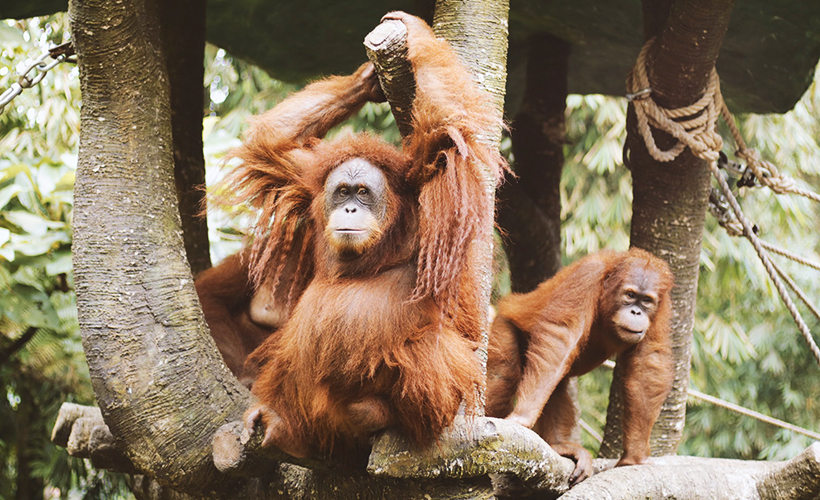Lake Toba on the Indonesian island of Sumatra has been on the travel radars of intrepid travellers for decades. Located at a similar latitude and due west of Kuala Lumpur, the massive inland lake is also the home of the Batak Toba people.
Visitors can fly into Medan and then travel overland to the lake, or fly from Kuala Lumpur to Jakarta, and then on AirAsia Indonesia from Jakarta to Silangit International Airport (Lake Toba) near the southern rim of the lake.
Lake Toba is a popular destination for adventurous tourists who want to explore a remote part of Northern Sumatra that is just brimming with numerous cultural and natural assets.
Lake Toba’s volcanic history
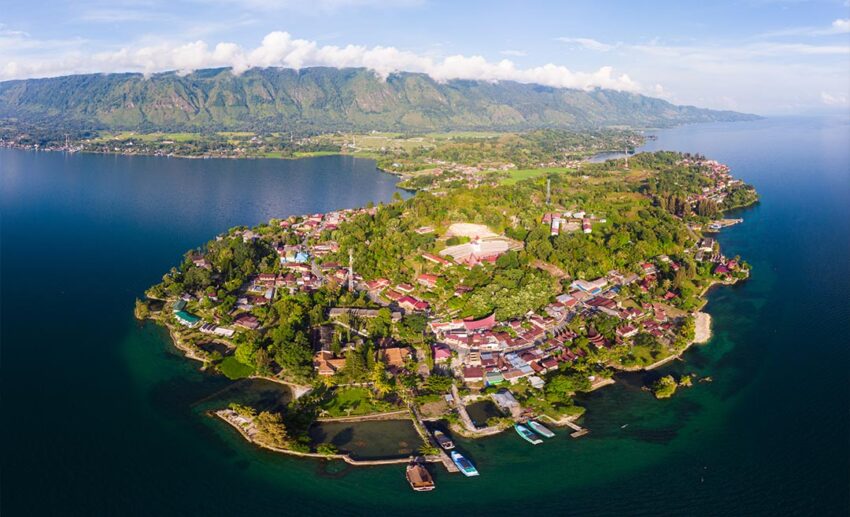
The region’s largest lake, measuring 30 km by 100 km and up to a depth of 500 m, is also Indonesia’s largest and deepest lake and the world’s largest volcanic lake. Lake Toba (Danau Toba) resulted from a massive volcanic eruption that, according to volcanologists, occurred some 75,000 years ago. Scientists believe that this eruption was so massive that it eradicated most lifeforms in a huge radius around the volcano.
Volcanologists have also theorised that the eruption led to a global winter and a drop in temperature of up to 5o C. While most of us are now concerned about gradual global warming of a degree or so, imagine a sudden dramatic loss of the magnitude of 5o C!
Sometime afterwards, the volcano collapsed, enabling its massive caldera to fill with water and thus creating the lake. Located in the central part of northern Sumatra, Lake Toba is now one of Sumatra’s main tourist attractions.
Experiencing Batak Toba architecture, textiles, and food
The Batak Toba people are known for their intriguing architecture and textile weaving. These people live in small villages called huta, and the Huta Batak TB Silalahi Centre is a museum that celebrates the lives of the Batak Toba people, located near Balige on the southern rim of the caldera.
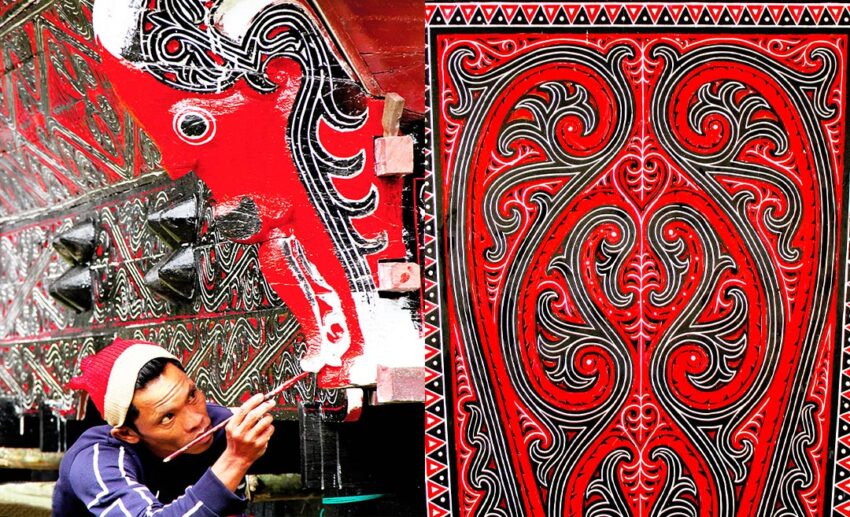
The traditional houses of the Batak Toba feature artistic decoration comprising just three colours – black, white, and red. Known as gorga, this decorative artwork is either painted or carved onto wooden panels, with each colour representing a different realm of Batak Toba cosmology: white (upper realm), red (middle realm), and black (lower realm). Traditionally, these colours were sourced from nature, but now, commercial paint is used. The colours and designs are meant to protect village buildings from spiritual or natural harm.
The museum’s setting, high above the lake, affords excellent elevated views as well as over some adjoining traditional villages and rice terraces where the locals source this prized staple crop.
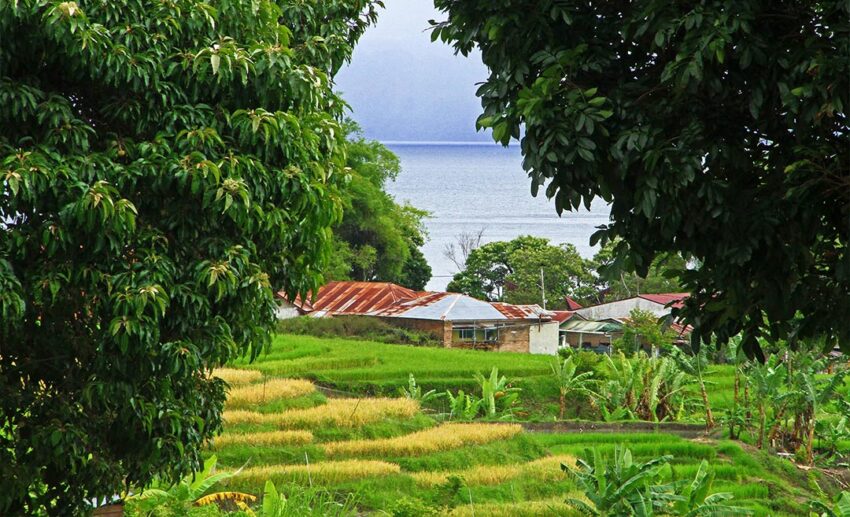
Most local women wear a garment called ulos when attending traditional Batak Toba ceremonies, but some also use it as everyday wear. These garments are found all around this part of Sumatra but the quality varies. Textile connoisseurs seeking high-quality, hand-woven textiles, should visit Lumban Suhi-Suhi Toruan Village. Here, visitors can watch the weavers at work and also make purchases.
Another important part of the local culture is food, and the dishes I sampled were delicious. I dined at Damar Toba beside the lake near Pantai Bulbul, and loved the dishes and the open-air setting at sunset. Another dish I tried was a local Batak favourite, mie gomak. This thick, spicy noodle soup is prepared with coconut milk, thick noodles called mie lidi, (similar to spaghetti pasta), vegetables, tofu, and tasty curry spices.
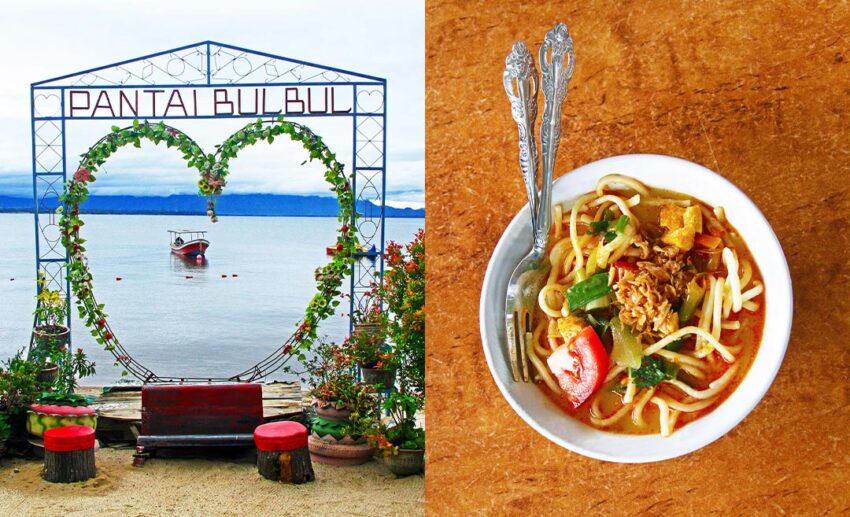
Exploring neighbouring Samosir Island
My time at Lake Toba was far too short, but my sense of adventure suggests that I should return when AirAsia resumes its direct flights from Kuala Lumpur.
When I return, I will fly into Silangit International Airport and then head by boat across the lake to Samosir Island. Activities on or around the island include kayaking, standing paddleboarding, visiting waterfalls, climbing Pusuk Buhit (1,972 m), bathing in hot springs, and exploring the 1,700 km2 island by motorbike.
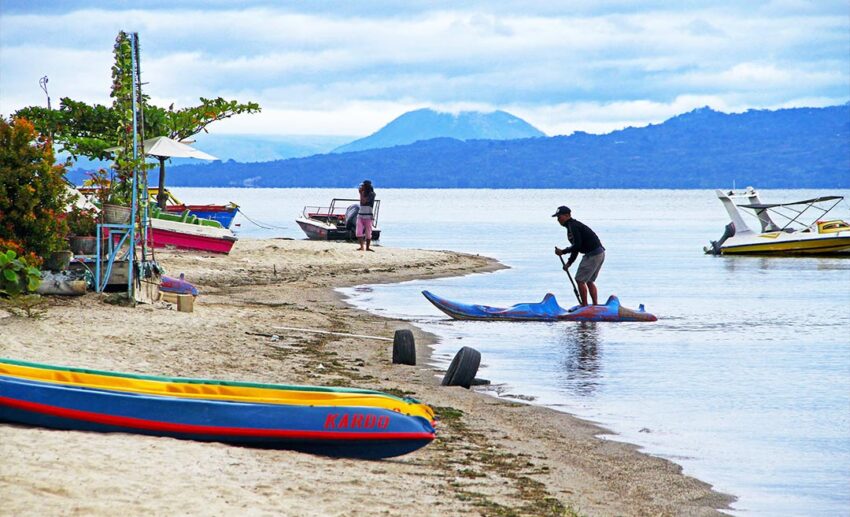
There is also a cultural village and museum on the island of Samosir that I need to explore. Here, visitors can learn about traditional handicrafts like weaving and admire the unique wooden houses (rumah bolon) with their distinctive curved rooflines shaped like bull’s horns.
The Batak Toba erected three traditional types of buildings: bale (meeting hall), rumah bolon (house), and sopo (rice barn). Most houses are large enough to accommodate extended families who live communally. While many Batak now choose to live in more contemporary housing, traditional wooden and attap houses stand tall on stilts and extend over two levels. Many are boat-shaped with intricately carved gables and roof ridges that swing upwards like the horns of a buffalo (similar to the Minangkabau-inspired architecture of Malaysia’s Negeri Sembilan).
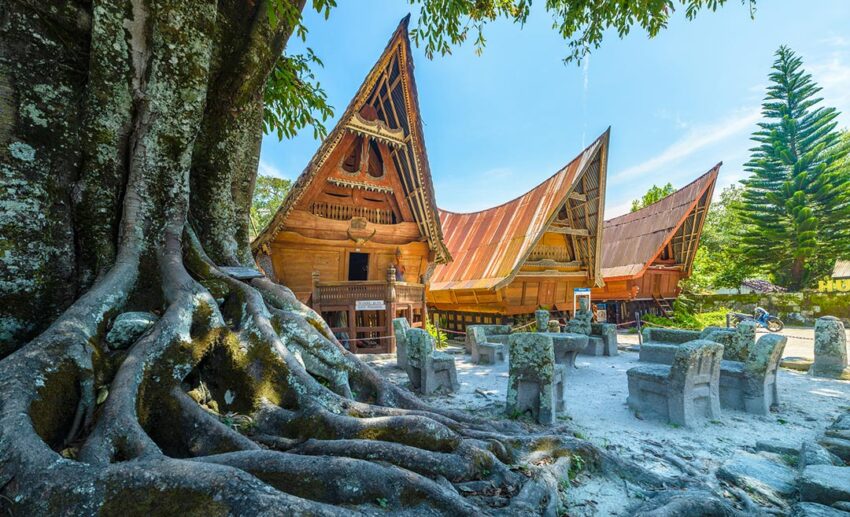
Many of the Batak Toba people converted to Christianity in the 19th century, and churches are a common sight in this part of Indonesia.
Previously, international visitors flew to Medan for the five-hour road journey to Lake Toba, but the opening of the international airport at Silangit, just south of the lake, has shaved off some of the time. However, the airport is a three-hour road trip from Samosir Island, but a boat journey to the island is far shorter. Travellers should consider the size of the lake when planning their holiday.
Visitors can fly in and out of Silangit Airport or into Silangit and out of Medan, the regional capital located 180 km to the north of Lake Toba.
Great for laid-back adventurers
Lake Toba will appeal to travellers seeking a quiet Asian backwater with numerous natural attractions and a culture that has not been overly affected by development. Life here moves a little slower than in most other parts of Asia, and that is its real charm.
Malaysians should travel here with the expectation that things will not happen with the same slickness as in other leading Asian tourist destinations, but leave in the knowledge that the culture of the Batak Toba people remains mostly intact. Visitors will also enjoy the cool mountain air of Lake Toba, which makes it perfect for outdoor activities.
Travel tips for Lake Toba
Getting there: AirAsia Indonesia currently flies to Silangit several times a week. AirAsia Indonesia flights are being streamlined before international flights, such as those between Kuala Lumpur and Silangit, resume. This may happen in the near future, thus enabling Malaysians to visit northern Sumatra once again.
Suggested accommodation near the lake: Sere Nauli Hotel Laguboti
For on-ground travel assistance upon arrival: Contact Usaha Suka Maju via email, [email protected]
*All images are by David Bowden unless stated otherwise.

